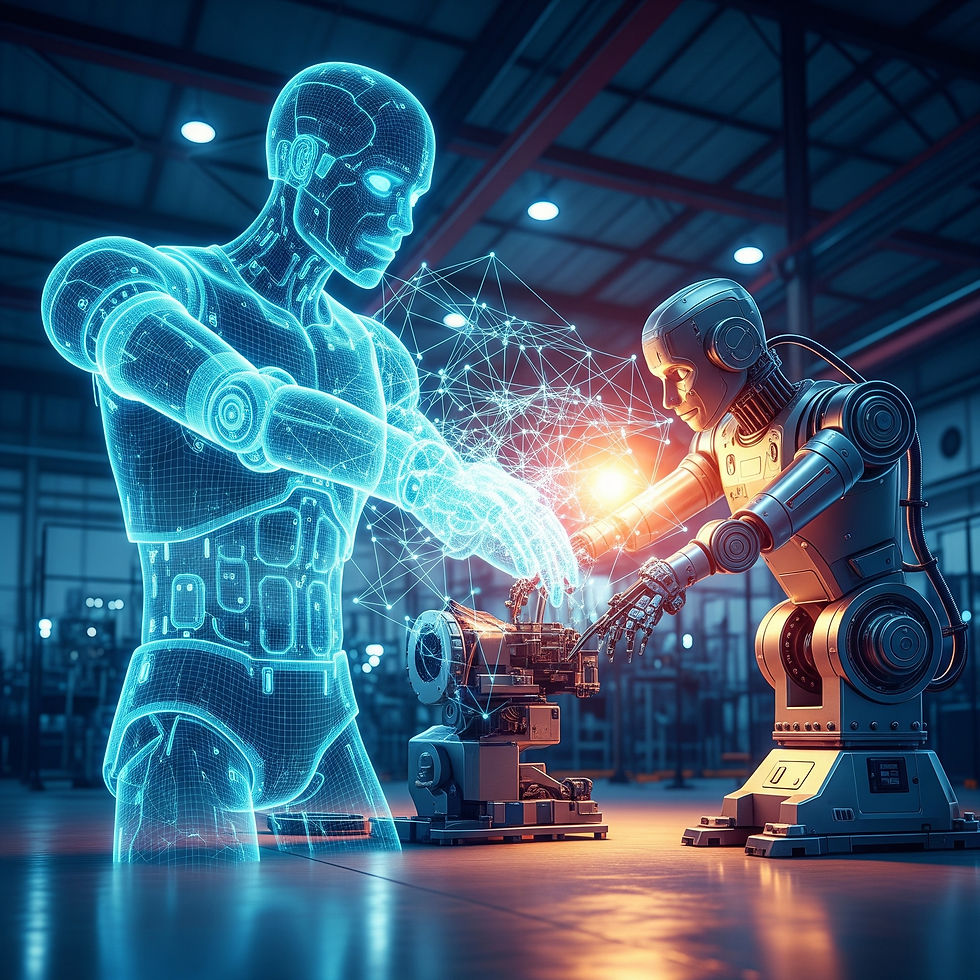
Executive Summary
Digital twins are virtual models that replicate the behavior and status of physical assets in real time. In robotics and automation, digital twins are transforming how systems are designed, deployed, and optimized. By simulating robotic systems before physical implementation, engineers can reduce commissioning time, predict failures, and enhance performance. This white paper explores the strategic importance of digital twins, use cases across automation sectors, and how Artisan Edge supports their implementation.
What is a Digital Twin?
A digital twin is a high-fidelity, continuously updated virtual replica of a physical asset, process, or system. It uses real-time sensor data and simulation models to reflect operational behavior under current and hypothetical conditions.
Core components:
3D or kinematic model of the robotic system
Sensor input from the physical system (i.e. torque, velocity, position)
Control system synchronization with the real robot or PLC
Analytical models that simulate wear, degradation, or variance
Key Benefits in Robotics and Automation
Design Validation and Optimization
Simulate mechanical interactions, joint movements, and control sequences
Validate reach, collision avoidance, and cycle times before physical build
Predictive Maintenance
Use real-time data to forecast wear patterns and failure risks
Optimize maintenance schedules based on simulated life expectancy
Training and Scenario Testing
Train operators and test new sequences virtually without disrupting production
Evaluate performance under failure modes or parameter changes
Process Improvement and Tuning
Analyze discrepancies between actual and expected behavior to refine control logic
Experiment with optimized trajectories or task assignments in a safe digital space
Industrial Use Cases
Automotive Assembly: Simulate full-body weld and assembly lines to identify cycle-time inefficiencies
Electronics Manufacturing: Tune micro-assembly tasks for soldering or adhesive application
Logistics: Optimize robotic picking strategies under varying load and path constraints
Aerospace: Model large-scale robotic draping and fastening with sub-millimeter precision
How Artisan Edge Enables Digital Twins
Artisan Edge is engineered to support real-time digital twin synchronization by:
Capturing high-frequency machine data via edge computing
Providing standardized data streams for simulation inputs
Enabling bidirectional control mapping between digital twin and real device
Supporting simulation integration with platforms such as Siemens Tecnomatix, Unity, and ROS
Strategic Advantages
Faster Deployment: Commission and validate systems virtually before physical build
Lower Risk: Detect configuration errors and prevent mechanical failures before they occur
Higher Uptime: Use simulated insights to preemptively resolve anomalies
Data-Driven Innovation: Model new workflows, robot types, or product SKUs before live production
Conclusion
Digital twins are reshaping robotics by providing continuous feedback loops between simulation and operation. Manufacturers that adopt digital twin strategies gain speed, precision, and agility in system design and lifecycle management. Artisan Technologies offers robust data infrastructure and integration capabilities to bring digital twins to life in any robotic environment.
To learn how digital twins can support your robotics or automation strategy, contact us at sales@artisantec.io or visit www.artisantec.io.
Artisan Technologies | © 2025 All rights reserved
